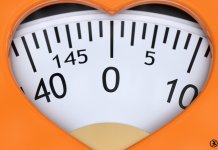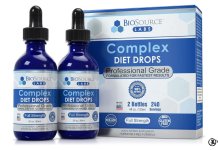I get commissions for purchases made through links on the site. As an Amazon and Clickbank Associate I earn from qualifying purchases. Learn more.
Cardio is the short form of cardiovascular training. It incorporates various exercises that elevate your heart rate. Some of the best cardio exercises for weight loss include circuit training, brisk walking, biking, burpees, high-intensity interval training, lunges, jumping rope, rowing machine, push-ups, jumping jacks, climbing, and elliptical. There are numerous reasons why most individuals opt for cardio exercises: boost mental health, reduce weight, improve heart health, burn excess calories, and enhance overall fitness. Cardiovascular exercises can also be termed as aerobic exercises because they demand elevated oxygen flow. This is the main reason why you’ll breathe harder while performing cardio workouts. Pairing a cardio exercise with strength training will play a significant role in boosting your muscle mass. Based on science, there are some factors that will influence the effectiveness of cardiovascular exercises for weight loss, such as body composition, the intensity of the workout, gender, age, overall daily activity, and weight. Below are the top benefits of cardio in weight loss:
Estimated reading time: 11 minutes
Table of contents
- The Ultimate Guide to Buying the Best Treadmills For Weight Loss – Here is a comprehensive guide to the best treadmills on the market. Browse our guide to find the treadmill that’s right for you.
10 Benefits Of Cardio
1. Strengthen Your Immune System
Regular cardiovascular exercises can boost your immune system in both the short-run and long run. The main objective of the immune system is to protect your body from harmful pathogens. There are numerous factors that can affect your immune system, including genetics, sex, age, and infection history. Some of the signs and symptoms of a weak immune system are delayed growth, digestive problems, frequent cold, organ problems, autoimmune disease, infections, blood disorders, fatigue, and fatigue. Cardio exercises will help you strengthen your immune system, thus lowering your odds of becoming sick.
2. Reduce the Risk of Stroke
Obese individuals are more prone to stroke. Cardio workouts increase your heart rate, thus boosting your health and reducing the risks of stroke. According to statistics, 30 minutes of cardio sessions a day can lower your risk of developing stroke by at least 20%. Consistency is the key when it comes to cardio workouts. Pairing cardio workouts with strength training will reduce your risk of stroke by 70%. Therefore, cardio workouts will not only aid weight management but also reduce the risk of chronic health conditions, such as stroke.
3. Improve Bone Health
Based on science, the disease associated with bone loss is termed as osteoporosis. There are various factors that contribute to osteoporosis, including eating disorders, obesity, low calcium intake, and gastrointestinal surgery. Some of the main signs and symptoms of osteoporosis are height loss, fragility-related fractures, receding gums, lower back pain, and curved spine. Individuals who do cardiovascular workouts, including proper recovery and warm-up, have an increased bone mass density. Boosting your bone health minimizes your risk of broken bones, particularly during your old age. Cardiovascular exercises are the best workouts that’ll help you attain your fitness goals.
4. Boosts the Quality of Your Sleep
According to various studies, regular cardiovascular exercises can reduce daytime sleepiness and improve sleep quality, especially if you’re struggling with insomnia. In addition, moderate-intensity aerobic workouts can reduce the severity of sleep disorders, including obstructive sleep apnea. Regular cardio workouts can help you fall asleep more quickly and reduce the time you spend awake during the night. Enhancing the quality of your sleep will reduce your risk of developing chronic health issues, such as heart disease and type 2 diabetes. Also, adequate sleep will improve your memory, manage your weight, reduce the risk of inflammation, and enhance your concentration. Obesity can result in sleep deprivation. Therefore, managing a healthy weight will boost your sleep.
5. Improve Brain Function
Being overweight is associated with altered brain structure, plasticity, brain volume, and reduced cognitive function. Obese individuals are more prone to dementia which is characterized by impaired intellectual/mental functioning. Regular cardio exercises can improve your cognitive ability by increasing the size of your brain. Enhancing your brain function will help you make sound decisions. The best cardio exercises will boost your concentration, memory, and focus. Brain health is a fundamental piece of your health. It underlies your ability to problem-solve, make sound decisions, communicate, and live a productive life. This is because your brain controls your daily function. Therefore, it’s arguably one of the most valuable organs in the body.
6. Reduces Stress
Stress can be linked to obesity because individuals turn to foods high in sugar and fat in an attempt to feel better. There are various ways that can help you manage daily stressors and weight, such as mindfulness meditation, healthy foods, and exercises, including cardiovascular workouts. Based on research, cardio is a great anxiolytic. This is because cardio exercises will play a vital role in releasing norepinephrine into your bloodstream. Norepinephrine is a chemical compound that’s responsible for fighting symptoms of anxiety, thus calming people down. Regular cardiovascular workouts will increase your body’s ability to manage stress in the long run. There are various benefits of managing stress: boost your mood, control your weight, sleep better, and reduce muscle tension.
- A Complete Guide to Buying the Best Folding Exercise Bike – This is our best-selling folding exercise bikes review. It has all of the things you need to increase your capacity for exercise and improve your range of motion.
7. Reduce the Risk of Alzheimer’s Disease
There are various factors that increase your risks of developing Alzheimer’s disease, such as head injuries, family history, age, cardiovascular problems, down’s syndrome, etc. Some of the major signs and symptoms of Alzheimer’s disease include the inability to learn new things, increased confusion, increased memory loss, shortened attention span, difficulty with language, and problems coping with new situations. Cardiovascular exercises will improve your heart health and stimulate the release of chemicals that prevent brain cell degeneration. According to studies, being active lowers your odds of developing Alzheimer’s disease. Regular exercising is essential for brain health and heart health.
8. Relieves Depression
It’s scientifically proven that cardio exercises are effective in treating depression. Currently, most people are suffering from mental health problems, including depression. Some of the main causes of depression include substance use, genetics, early childhood experiences, and major life events. Cardio workouts produce endorphins that play a significant role in improving your mood and overall well-being. In addition, aerobic exercises can increase neurotransmitters like GABA, glutamate, norepinephrine, and serotonin, which are low in depressed people.
9. Reduces Back Pain
Some of the main culprits for back pain are osteoporosis, ruptured or bulging disks, ligament or muscle strain, and arthritis. In addition, some studies show that excess body weight can affect your knees, back, and pelvis. Therefore, being obese may strain your lower back, thus contributing to back pain, tightness, and soreness. Aerobic exercises, such as running, cycling, and walking, will release endorphins that play a vital role in reducing back pain. If back pain persists, consult a professional medical practitioner before engaging in cardio workouts.
10. Improves Metabolism
Cardiovascular exercises can accelerate your metabolism, strengthen heart muscles, and burn excess fats and calories in the body. Improving the rate of metabolism will catalyze the process of burning excess calories. Enhanced metabolism will aid weight management, increase your energy, and boost sleep. Choose a cardio exercise that suits your tastes and preferences.
- 5 Best Rowing Machines Under 300$ – If you are looking for the best rowing machine under 300$, you have come to the right place. We have spent many hours researching the best rowers on the market. We have also read and researched hundreds of other reviews.
Cardio and PEMF Therapy: Revolutionizing Weight Loss Together
In recent years, innovative approaches to weight loss have emerged, and one such method gaining attention is PEMF therapy. Pulsed Electromagnetic Field (PEMF) therapy involves the use of electromagnetic fields to stimulate the body’s natural healing and rejuvenation processes. Interestingly, PEMF therapy helps in weight loss by potentially enhancing cellular metabolism, improving circulation, and reducing inflammation, all of which are crucial factors in shedding excess weight. This therapy, which is non-invasive and painless, works at a cellular level to rejuvenate and restore bodily functions. Studies suggest that the improved cellular function and increased energy production resulting from PEMF therapy can support more efficient bodily processes, including those that govern metabolism and fat burning. While PEMF therapy is not a standalone solution for weight loss, it can be a valuable complement to traditional methods such as diet and exercise, offering a holistic approach to achieving and maintaining a healthy weight.
Effective Cardio Workouts for Weight Loss
When it comes to shedding those extra pounds and improving your overall fitness, cardio workouts are a powerful tool in your arsenal. They elevate your heart rate, burn calories, and contribute significantly to weight loss. But not all cardio workouts are created equal. To make the most of your efforts, it’s essential to choose effective cardio exercises that suit your fitness level and preferences. Here’s a breakdown of some highly effective cardio workouts for weight loss:
- Running/Jogging: Running is a high-impact cardio exercise that burns a substantial number of calories. It’s versatile and can be done outdoors or on a treadmill. Start with a manageable pace and gradually increase both speed and distance to challenge yourself.
- Cycling: Whether you prefer cycling outdoors or using a stationary bike, it’s an excellent low-impact cardio workout. Cycling not only burns calories but also tones the lower body muscles. Try interval training by alternating between high and low-intensity cycling to boost fat burning.
- Swimming: Swimming is a full-body workout that’s gentle on the joints. It engages multiple muscle groups and can help you shed excess weight. Aim for continuous laps or try water aerobics for variety.
- Jump Rope: Jumping rope is a simple yet effective cardio exercise that requires minimal equipment. It’s a fantastic calorie burner and improves coordination. Try different jump rope routines to keep things interesting.
- High-Intensity Interval Training (HIIT): HIIT workouts involve short bursts of intense exercise followed by brief rest periods. This approach elevates your heart rate quickly and keeps it there, resulting in efficient fat burning. HIIT can be applied to various exercises like jumping jacks, burpees, or sprints.
- Dancing: Dancing is a fun and social way to get your heart rate up. Whether it’s Zumba, hip-hop, or ballroom dancing, it’s an excellent cardio workout that doesn’t feel like exercise.
- Stair Climbing: Find a set of stairs, and you have a built-in cardio machine. Climbing stairs engages the lower body muscles and provides a great cardiovascular workout. It’s also an effective way to tone your glutes and legs.
- Rowing: Rowing machines offer a full-body workout that burns calories and builds muscle strength. Rowing combines both cardio and resistance training, making it a fantastic choice for weight loss.
- Boxing: Boxing workouts involve punching bags, pads, or shadowboxing. It’s a high-intensity workout that enhances cardiovascular fitness, agility, and strength. Plus, it’s an excellent stress reliever.
- Elliptical Trainer: The elliptical machine provides a low-impact, full-body workout. It’s gentle on the joints while delivering an effective cardio session. Adjust the resistance and incline to vary the intensity.
Remember, the key to successful weight loss with cardio workouts is consistency. Aim to incorporate cardio exercises into your routine several times a week. As you progress, consider mixing and matching different workouts to keep things fresh and prevent plateaus. And don’t forget to pair your cardio efforts with a balanced diet for the best weight loss results.
Frequently Asked Questions (FAQs)
Cardiovascular exercises are great for weight management, but it’s important to know the best cardio workout schedule that’ll help you achieve your fitness goals. Based on research, 300 minutes of moderate-intensity cardio sessions per week are ideal for weight management. But, if you need to shed more weight, combine cardio workouts with strength training. Most researchers recommend cardio workouts in a more moderate-to-high-intensity range. Pairing cardio exercises with strength training will burn excess calories within a short span.
When it comes to weight management, you can either start your workout session with cardio or weight lifting. Most individuals will only focus on cardio because it burns more calories within a short span, but it’s important to combine cardiovascular exercises with strength training. This is because strength training will increase your lean body mass, which will play a significant role in burning excess calories and fat in the long run. Have shorter rest intervals during your heavy weight training in order to increase post-exercise oxygen consumption. In addition, if your main goal is to manage a healthy weight, increase your non-exercise activity thermogenesis.
After your cardiovascular workout, drink plenty of water. You can drink a sports drink with electrolytes, such as Gatorade. These drinks play a significant role in replacing sodium and fluids lost through sweat. In addition, you can consume a light meal with a carbs/protein ratio of 3:1. Include foods such as milk, cereals, eggs, and a protein shake. On the other hand, you should consume a pre-workout snack with less than 200 calories before a cardio exercise session. This snack should incorporate lean meat and low-glycemic carbohydrates, such as nuts, fruits, vegetables, minimally processed grains, beans, low-fat dairy foods, pasta, etc.
Running is classified as the best cardio exercise that burns the most fat per hour. Running will improve not only your aerobic fitness but also cardiovascular health. Other benefits of running include reducing stress, building muscle mass, improving cardiovascular health, increasing bone density, and boosting your confidence. Swimming, jogging, and stationary bicycling are excellent options as well.




























